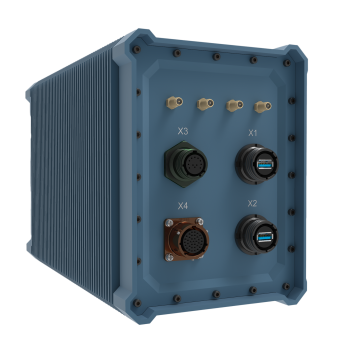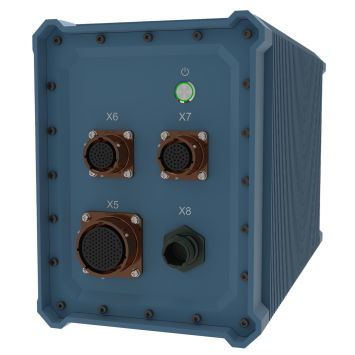F40C
Refer 3/4 Short ATR (Customization)
- IP66 ATR Mission Computer
- NVIDIA® Jetson AGX Orin GPU, 2048 CUDA cores (Optional)
- 9th Gen Intel® Xeon® E-2276ML (6xC,12T) 4.2Ghz
- IP66 Chassis with D38999 connectors
- Dual Redundant MIL-STD-1553 connections (Optional)
- Dual ARINC 429 input connections (Optional)
- 4x DDR4-2400MHz, up to 128GB,
- MIL-STD 810 509 Salt Fog Conformal Coating
- MIL-STD 810 500.6 Low Pressure (50,000 ft) Altitude

- Technical Profile
- Specifications
- Download
- Introduction
-
ATR (Air Transport Rack) is a standard that specifies form fit and function of enclosures designed to protect the main internal system. This military enclosure must meet EMI / EMC requirements to prevent noise interference, provide lightning protection and be isolated from small particle contaminants. So, it can be deployed in unmanned aerial vehicles, fighters, and helicopters. To satisfy diverse conditions, ATR chassis are available in different sizes—1/2, 3/4 and Full ATR sizes. Based on 3/4 ATR size, 7Starlake launches a new Rugged Airborne Mission Computer F40C.

- ARINC 429
-
ARINC 429 is the worldwide standard for data transmission in aircraft electronics. It is adopted mostly for commercial aircraft and transport aircraft network protocol standard. Communications, guidance, altitude, altitude reference, flight management, and more are all needed to work together to accomplish a successful flight. The physical connection wires are twisted pairs carrying balanced differential signaling.
The ARINC 429 unit of transmission is a fixed-length 32-bit frame, which the standard refers to as a 'word'. The bits within an ARINC 429 word are serially identified from Bit Number 1 to Bit Number or simply Bit 1 to Bit 32.

- MIL-STD-1553
-
MIL STD 1553 is US Military Department of Defence standard that was initially published in 1973.
MIL STD 1553 is a differential serial bus. Also, it is a dual redundant data bus. Each node is connected to each of the redundant buses. Secondly, if one should fail, communications can still continue.
There are three types of operating nodes for 1553 Bus:
•A Bus Controller initiates all messages, traffic and commands the remote terminals to transmit/receive data.•Remote Terminal interfaces the 1553 Bus and Sub System Bridge to other 1553 Buses. It responds to the bus controller.•The Bus Monitor listens to messages and records them.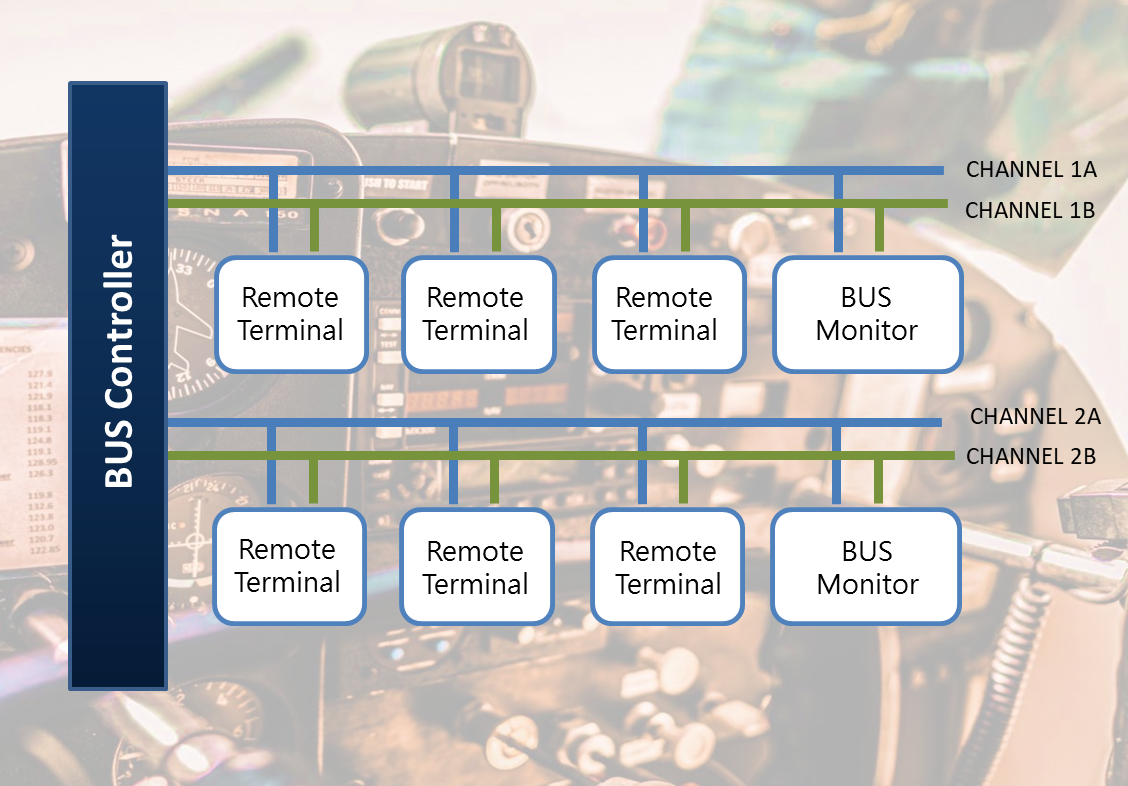
- IT Block Diagram
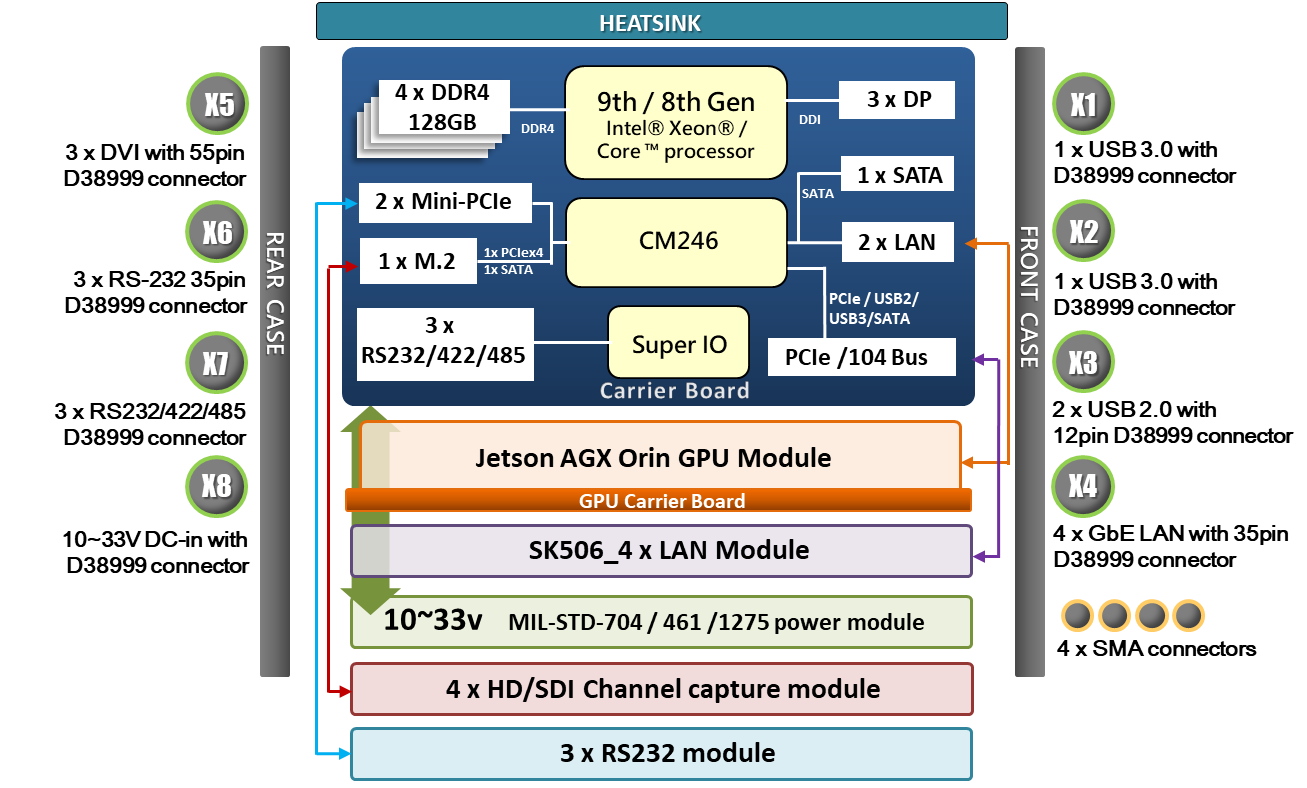
- Features
-
Computing Features
- Core i7-9850HE (up to 4.40 GHz),45W
- Core i7-9850HL (up to 4.10 GHz), 25W
- Xeon E-2276ME (up to 4.50 GHz), 45W
- Xeon E-2276ML (up to 4.20 GHz), 25W
- 4 x 260 Pin DDR4 SO-DIMM (up to 128GB)
- Jetson AGX Orin™ AI supercomputer
NVIDIA Ampere Architecture
2048 NVIDIA® CUDA® cores
- 1 x M.2 2280 M-key (SATA/PCIe 3.0x4 NVMe)
- 2 x Full size (USB / PCIe and micro SIM Card)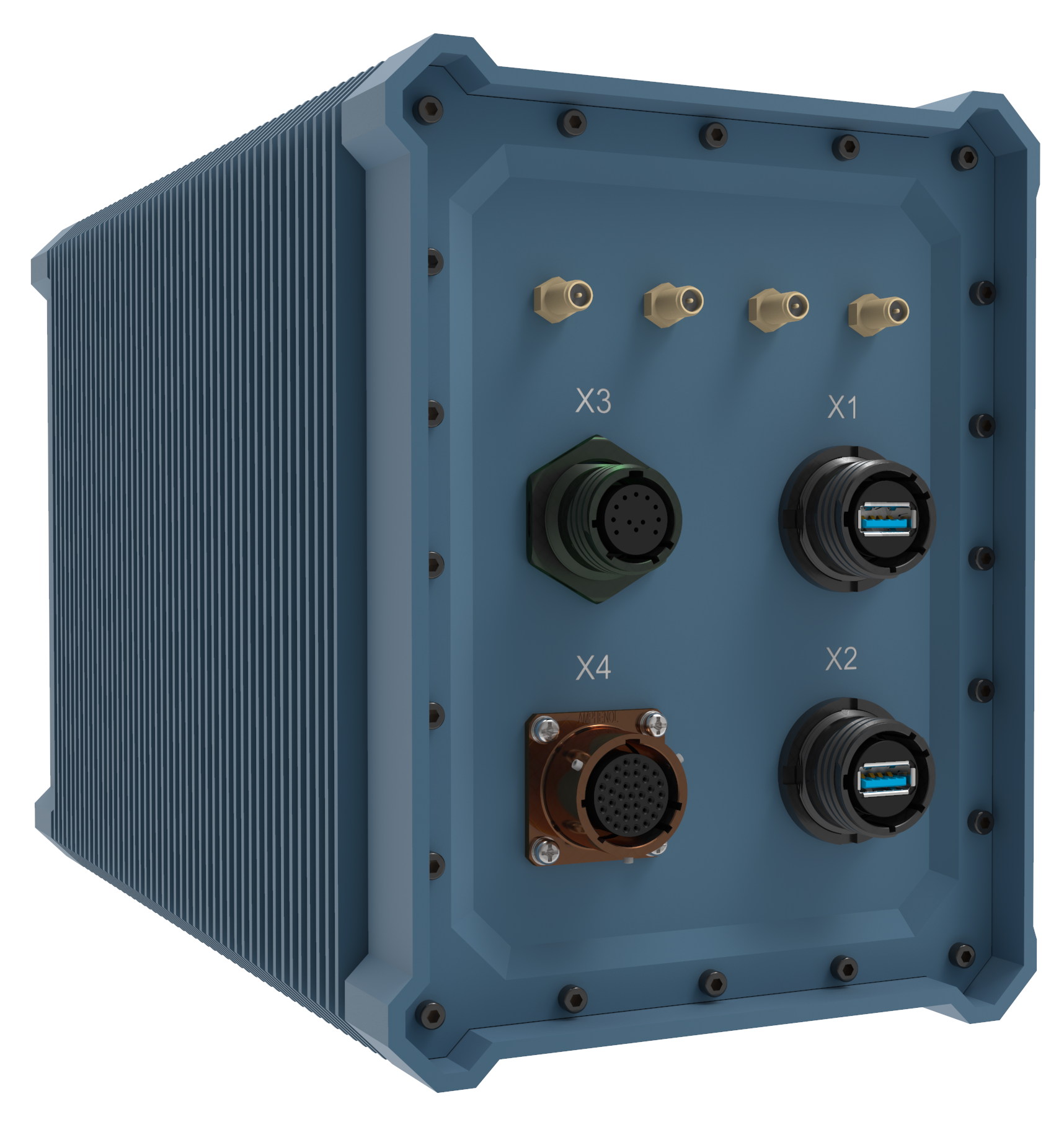
I/O and Expansion Options
- X1 : One USB 3.0 with D38999 connector
- X2 : One USB 3.0 with D38999 connector
- X3 : Two USB 2.0 with 12pin D38999 connector
- X4 : Four Gigabit Ethernet with 35pin D38999 connector
- SMA : Four SMA connectors for internal encoder
- X5 : Three DVI with 55pin D38999 connector
- X6 : Three RS-232 with 35pin D38999 connector
- X7 : Three RS-232/422/485 with 35pin D38999 connector
- X8 : One 10V~33V DC-in with D38999 connectorEnvironment
- MIL-STD-704 / 461 /1275 wide range 10-33V DC power module
- MIL-STD-810, 461, 1275, IP-68 compliant
- Operates up to extended temp -40°C to +55°C
- System main board : EBX SBC-OXY5741A
-
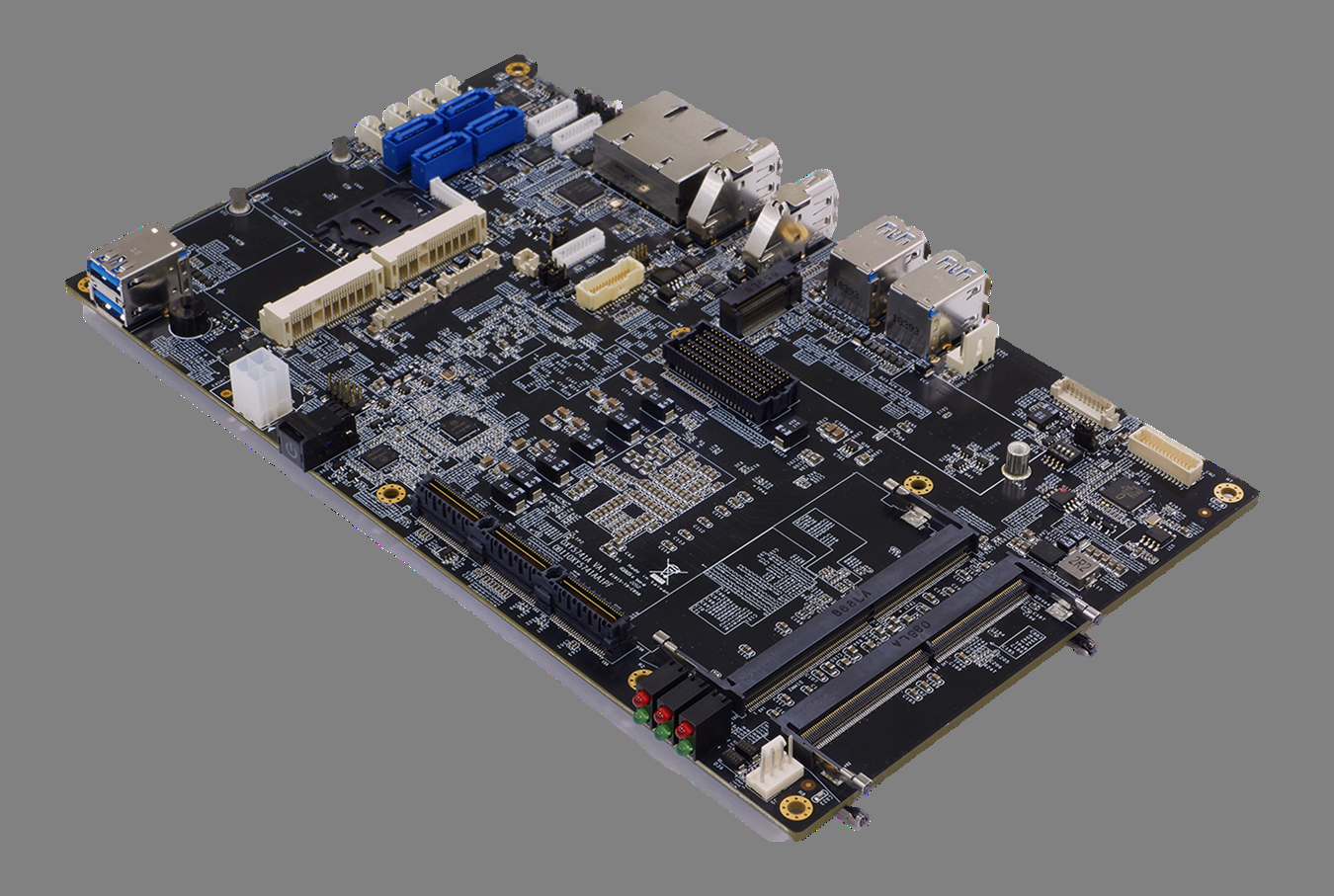
The EBX SBC OXY5741A provides extraordinary computing performance under extreme environment. It is powered by 9th / 8th Gen Intel® Xeon® / Core ™. Featuring Intel’s Xeon E-2276ML and ruggedized open-standard EBX architecture, PERFECTRON EBX series is built tentatively and triumphs on environmental testing. It still operates effectively under harsh environments ranging from -40 to 85°C so that it is a perfect solution for defence, transportation, and automation applications. More key functions such as stackable PCIe/104 expansion ability, flexible I/O, and NVMe Gen 3.0 PCIex4 for fast and large capacity storage, all contribute to this versatile architecture that can meet clients’ needs.
-
Choosing an embedded architecture for computer systems can be a formidable task. This kind of stackable and mezzanine architecture often results in tradeoffs that include off-the-shelf or custom design requirements. PCIe/104 compact, ruggedized, easily expandable traits support a lot of expansion flexibility in systems. This architecture evolved to address these resulting issues by keeping the common background while eliminating limitations. OXY5741 employs PCIe/104 technology to reduce constraints and create flexibility of expansion. Its M.2 extension offers M-key (M-Key 2280 optional), and PCIe 3.0 x 4 NVMe. Additionally, OXY5741 provides 3.0 ports for data redundancy by supporting RAID 0/1.
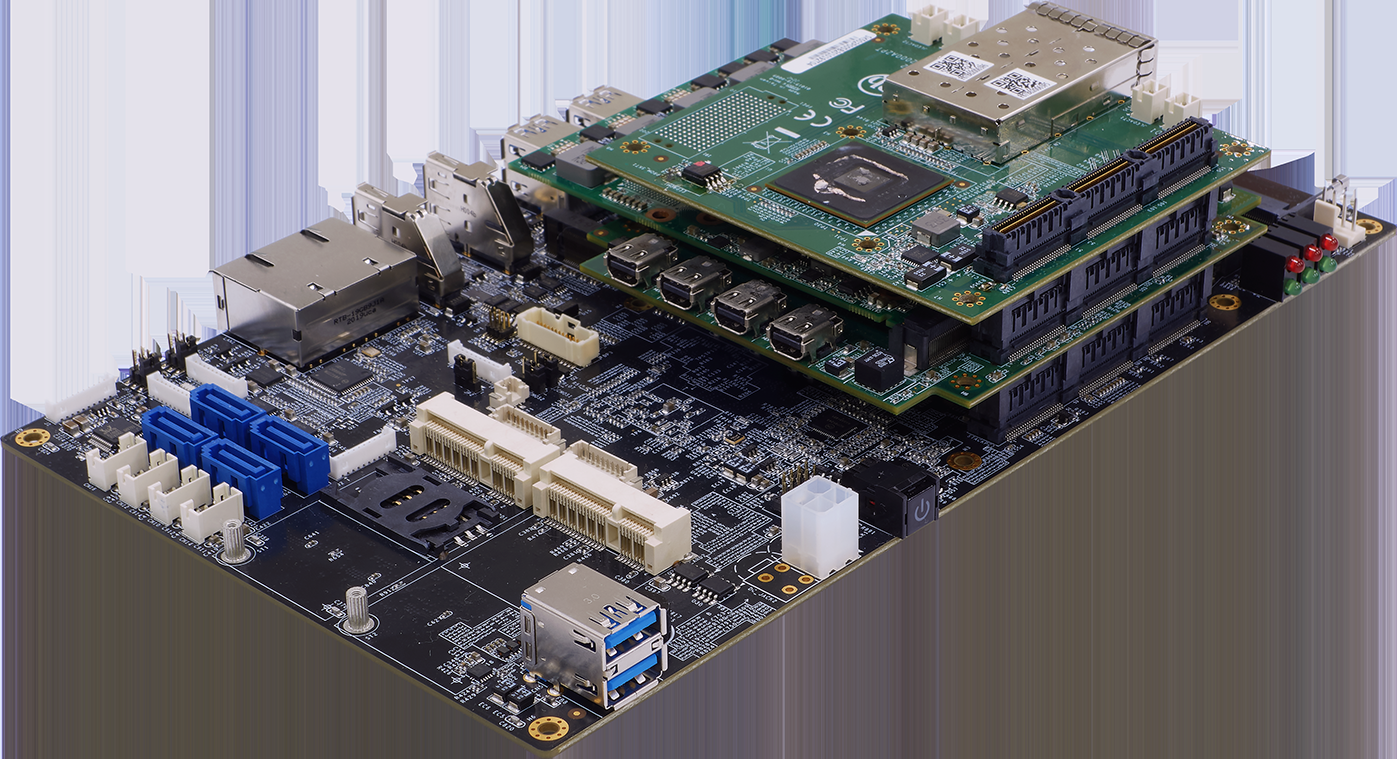

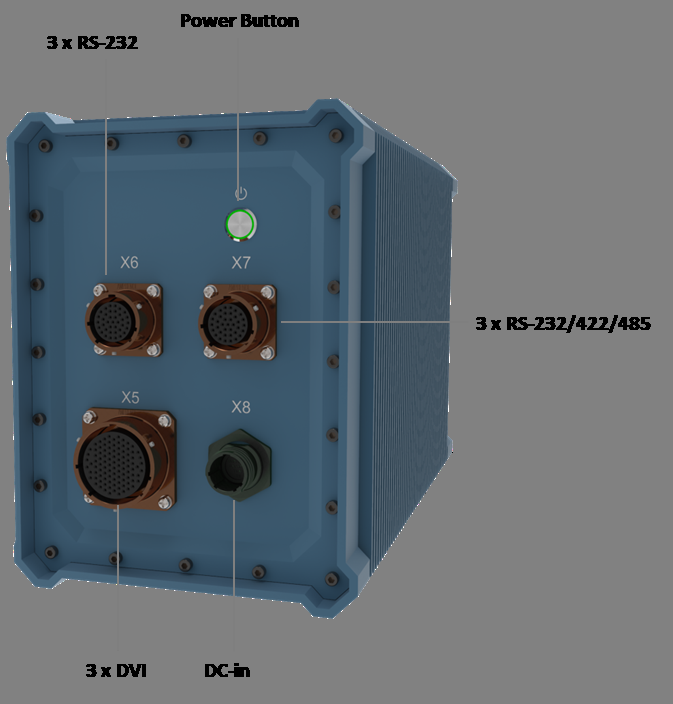
|
System |
|
|---|---|
|
High Power Processor |
Core i7-9850HE (6 Cores/12 Threads, 9M Cache, up to 4.40 GHz), 45W Core i7-9850HL (6 Cores/12 Threads, 9M Cache, up to 4.10 GHz), 25W Xeon E-2276ME (6 Cores/12 Threads, 12M Cache, up to 4.50 GHz), 45W Xeon E-2276ML (6 Cores/12 Threads, 12M Cache, up to 4.20 GHz), 25W |
|
Memory type |
4x 260 Pin DDR4 2400MHz SO-DIMM (up to 128GB) |
|
GPU (Options) |
Jetson AGX Orin™ AI supercomputer NVIDIA Ampere Architecture 2048 NVIDIA® CUDA® cores / 64 Tensor Cores 12 core Cortex A78 ARM 64-bit CPU / 32GB 256-bit LPDDR5 |
|
VIDEO OUTPUT |
3x DVI |
|
VIDEO INPUT |
4 Channel capture module for 4 x SMA male connectors |
|
COM |
3x RS-232 3x RS-232/422/485 |
|
USB |
2x USB3.0 2x USB2.0 |
|
Ethernet |
4x GbE |
|
Power Type |
10V ~ 33V DC IN |
|
Storage |
1x 2.5” SATA SSD, 1TB |
|
Operating Temperature |
-40°C to +55°C |
|
Dimension |
190.5(W) x 318 (L1)x 152.4(H) mm |
|
FRONT I/O |
|
|
X1 |
1x USB 3.0 with D38999 connector |
|
X2 |
1x USB 3.0 with D38999 connector |
|
X3 |
2x USB 2.0 with 12pin D38999 connector |
|
X4 |
4x GbE LAN with 35pin D38999 connector |
|
SMA |
4x SMA connectors |
|
REAR I/O |
|
|
X5 |
3x DVI with 55pin D38999 connector |
|
X6 |
3x RS-232 with 35pin D38999 connector |
|
X7 |
3x RS232/485 with 35pin D38999 connector |
|
X8 |
1x 10V~33V DC-in with D38999 connector |
|
Environmental |
|
|
MIL-STD-810 Test |
Method 500.5, Procedures I and II (Altitude, Operation): 12,192M, (40,000 ft) for the initial cabin altitude (18.8Kpa or 2.73 Psia) Method 500.5, Procedures III and IV (Altitude, Non-Operation): 15,240, (50,000 ft) for the initial cabin altitude (14.9Kpa or 2.16 Psia) Method 501.5, Procedure I (Storage/High Temperature) Method 501.5, Procedure II (Operation/High Temperature) Method 502.5, Procedure I (Storage/Low Temperature) Method 502.5, Procedure II (Operation/Low Temperature) Method 503.5, Procedure I (Temperature shock) Method 507.5, Procedure II (Temperature & Humidity) Method 514.6, Vibration Category 24/Non-Operating (Category 20 & 24,Vibration) Method 514.6, Vibration Category 20/Operating (Category 20 & 24,Vibration) Method 516.6, Shock-Procedure V Non-Operating (Mechanical Shock) Method 516.6, Shock-Procedure I Operating (Mechanical Shock) |
|
Reliability |
No Moving Parts; Passive Cooling. Designed & Manufactured using ISO 9001 Certified Quality Program. |
|
EMC |
MIL-STD-461 : CE102 basic curve, 10kHz - 30 MHz RE102-4, (1.5 MHz) -30 MHz - 5 GHz RS103, 200 MHz - 3.2 GHz, 50 V/m equal for all frequencies EN 61000-4-2: Air discharge: 8 kV, Contact discharge: 6kV EN 61000-4-3: 10V/m EN 61000-4-4: Signal and DC-Net: 1 kV EN 61000-4-5: Leads vs. ground potential 1kV, Signal und DC-Net: 0.5 kV CE and FCC |
| Attachment | Size |
|---|---|
| US20160231790A1 - PCI-104_0.pdf (1.14 MB) | 1.14 MB |
